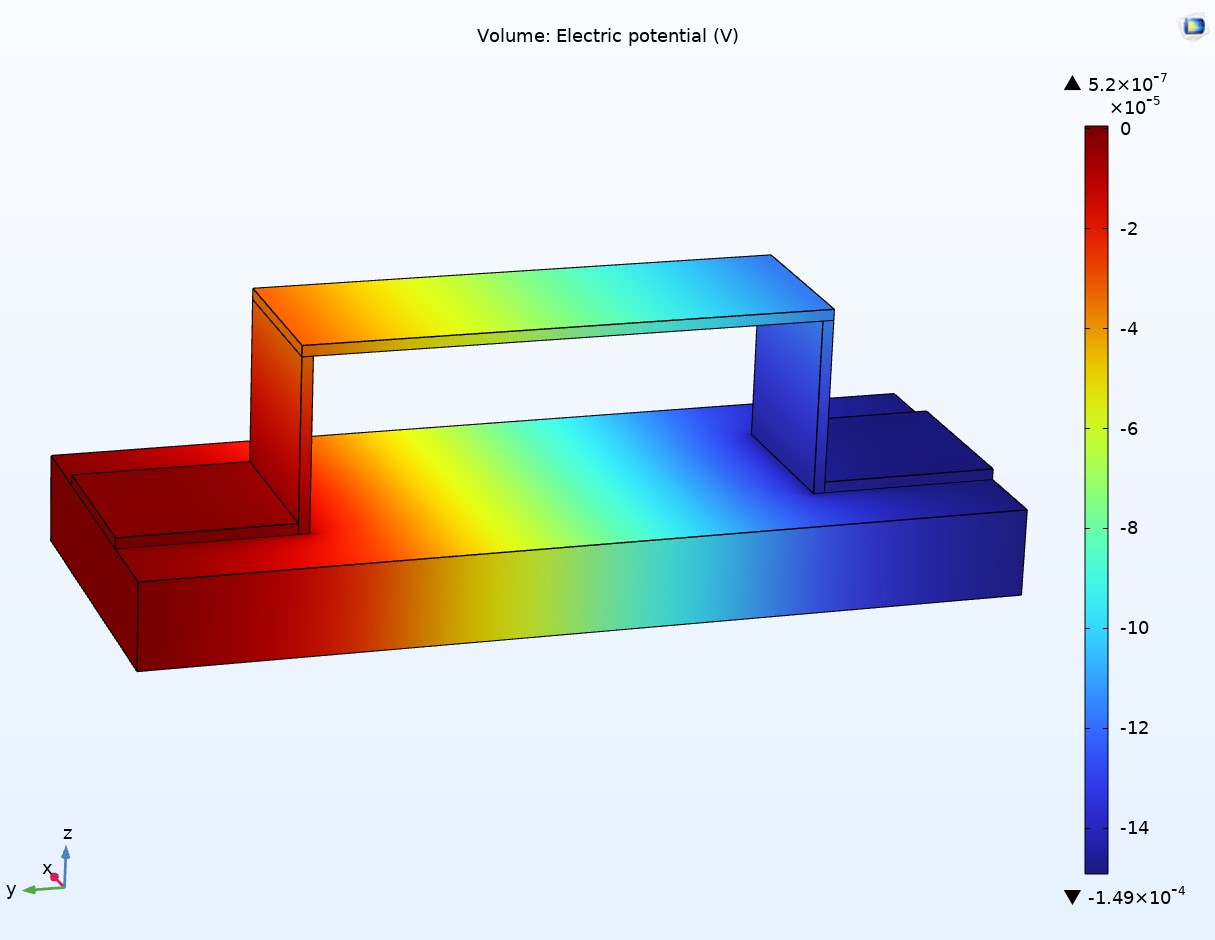Free Electron Gas and Drude Model assumptions
The free electron gas model assumptions are used in looking at the movement of electrons: ion-electron and electron-electron interactions are neglected; electrons have a scattering time τ and the probability of scattering in a specific time interval dt is dt/τ. Drude theory then applies the free electron gas model to electron movement within metals.
Seebeck Effect through Drude Model
When a heat source is applied to one end of a metal bar, depending on the properties of the bar, a potential difference between ends of the bar can occur. Initially, the electrons in the bar are governed by charge carrier diffusion, meaning that the valence electrons will start to move from the hot to cool end of the bar, until a compensating potential difference has built up. The direction of the electron movement changes with respect to potential depending on what type of semiconductor (metal) is being used. P-type semiconductors have positive mobile charges, electron holes, and have positive Seebeck coefficients. While n-type semiconductors have negative mobile charges, electrons, and have negative Seebeck Coefficients.
Regarding the difference between n- and p-type semiconductors: n-types have an abundance of free electrons, while p-types possess an excess of positively charged holes, resulting in a lower conductivity than the n-type. Furthermore, n-types facilitate the movement of electrons and p-types allow for the movement of holes.

As one of the copper/bismuth junctures of the apparatus heat up, the free electrons start to move down the temperature gradient to the cooler sides of the copper and bismuth, but as soon as a potential difference starts to occur, since copper is a p-type semiconductor with a positive Seebeck Coefficient, the direction of the electron flow is reversed. While, the free electrons in the bismuth do not change directions because bismuth is an n-type semiconductor with a negative Seebeck Coefficient. Thus, a current is slowly created. The starker the difference in Seebeck Coefficient the greater the current. Bismuth and Antimony have the starkest contrast, so a greater current is formed.